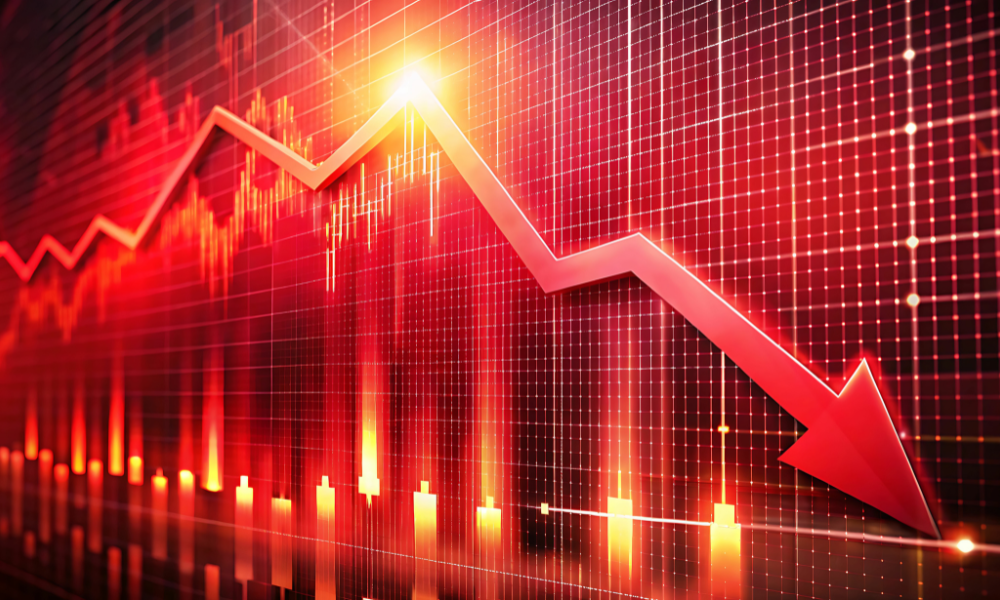

Equities slumped Thursday with a correction for the Nasdaq which ended the session down 2.6%, the S&P 500 falling below its 200-day moving average for a time, marking its lowest level since November, before closing down 1.8%, and the Dow Jones down 1% at the closing bell.
But while the markets reacted to a newly announced pause on tariffs for those imports from Canada and Mexico that are covered by the USMCA trade agreement – as they have done with other tariff news in recent weeks – President Trump said that the blame is with globalist countries and companies.
“I think it’s globalists that see how rich our country’s going to be, and they don’t like it,” he said in a press conference in the Oval Office.
While there was ambiguity about the meaning of the term ‘globalists’ in the context that the president was using it, he doubled down on his message that America has been treated unfairly by trading partners, but that was changing.
Later, he made it clear that his latest pause on tariffs with America’s neighbors was not in response to the current weakness of the markets.
“Nothing to do with the market. I’m not even looking at the market, President Trump stated.
Investors most certainly are looking at the market, and right now they don’t like what they are seeing.
Chris Larkin at E*Trade from Morgan Stanley said trade policy is dominating market action and “until the tariff smoke clears, it could continue to be a bumpy ride for traders and investors.”
CNN’s Fear and Greed Index moved deeper into ‘extreme fear’ territory, where it has been for more than a week having fallen steadily from a neutral position mid-February. The last time it was in the ‘Greed’ segment was the first week of December. There are several elements to the index but the bottom line is, the worse the fear, the more likely share prices are to fall.
Meanwhile, the AAII Sentiment Survey, a weekly barometer of confidence in the stock market based on telephone research with retail investors, reveals that bullish sentiment (expectation that stock prices will rise over the next six months) was down slightly to 19.3%, well below its 37.5% historical average.
Bearish sentiment was down 3.5 points but at 57.1% remains well above its historical average of 31%. Neutral sentiment was up 3.6 points at 23.6%, below its 31.5% historical average.
In early trading Friday, global stocks followed Wall Street lower. Markets are awaiting the US labor market report for signs of the strength of the economy, while the Fed’s Jerome Powell is due to speak later. Fed governor Christopher Waller said Thursday that he doesn’t see rate cuts this month but that there should be room for two or three during the year.

Rajesh Markan earlier this year pleaded guilty to one count of criminal fraud related to his sale of fake investments to 10 clients totaling $2.9 million.

From building trust to steering through emotions and responding to client challenges, new advisors need human skills to shape the future of the advice industry.

"The outcome is correct, but it's disappointing that FINRA had ample opportunity to investigate the merits of clients' allegations in these claims, including the testimony in the three investor arbitrations with hearings," Jeff Erez, a plaintiff's attorney representing a large portion of the Stifel clients, said.

Chair also praised the passage of stablecoin legislation this week.

Maridea Wealth Management's deal in Chicago, Illinois is its first after securing a strategic investment in April.
Orion's Tom Wilson on delivering coordinated, high-touch service in a world where returns alone no longer set you apart.
Barely a decade old, registered index-linked annuities have quickly surged in popularity, thanks to their unique blend of protection and growth potential—an appealing option for investors looking to chart a steadier course through today's choppy market waters, says Myles Lambert, Brighthouse Financial.
